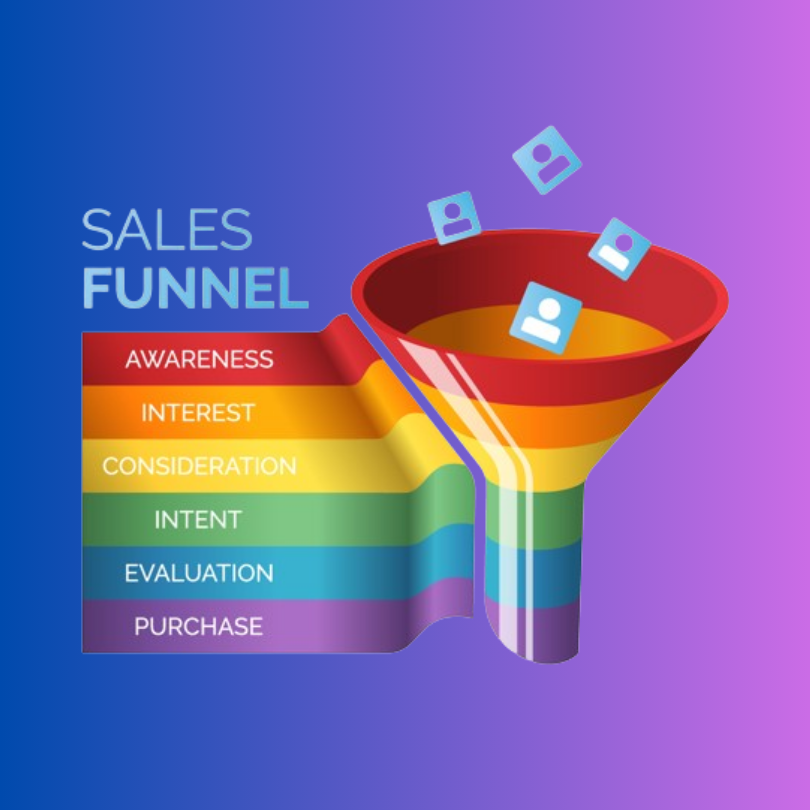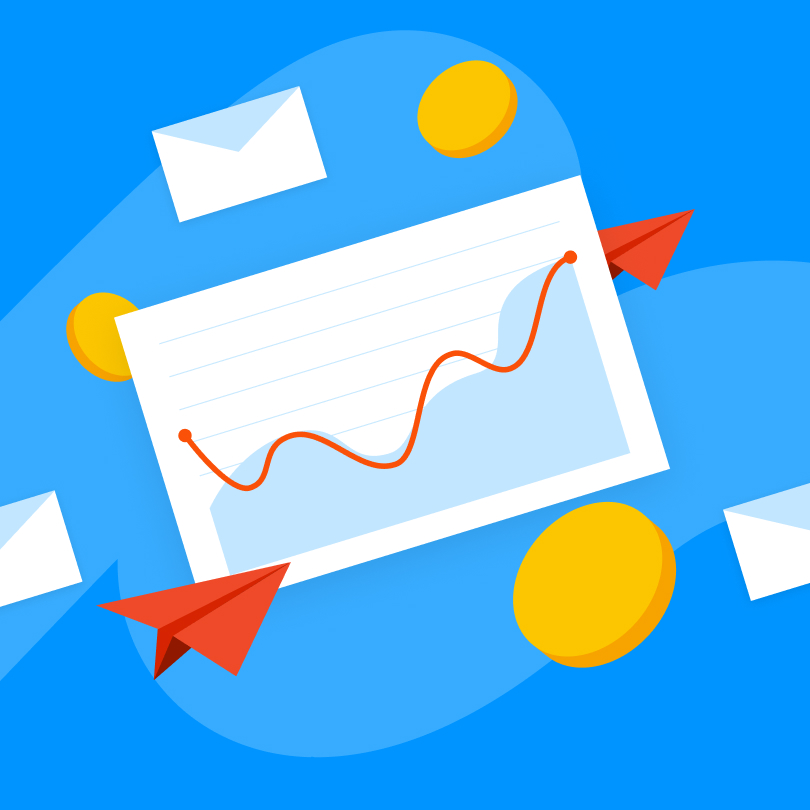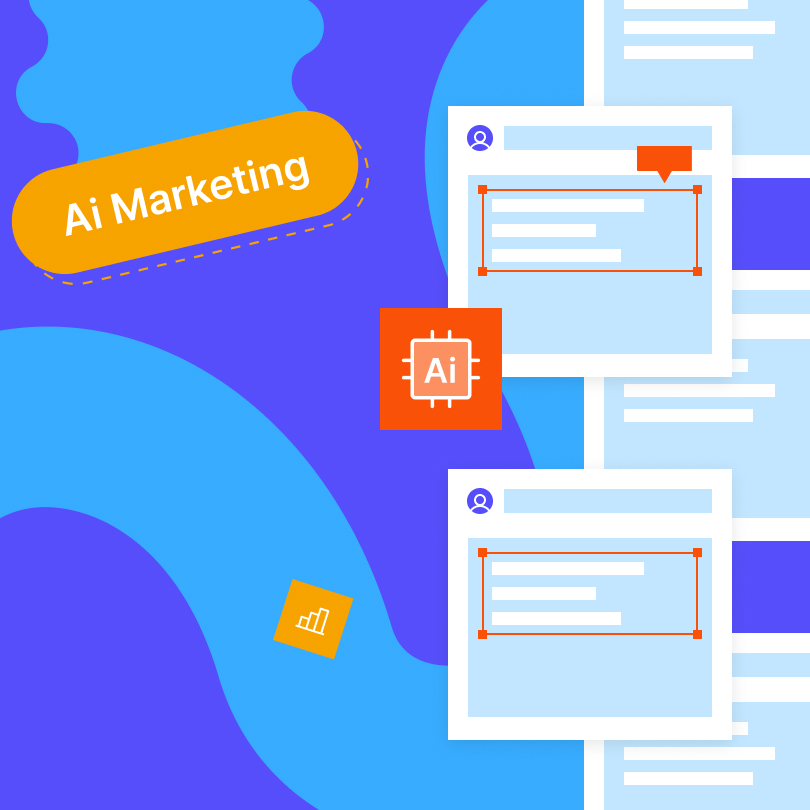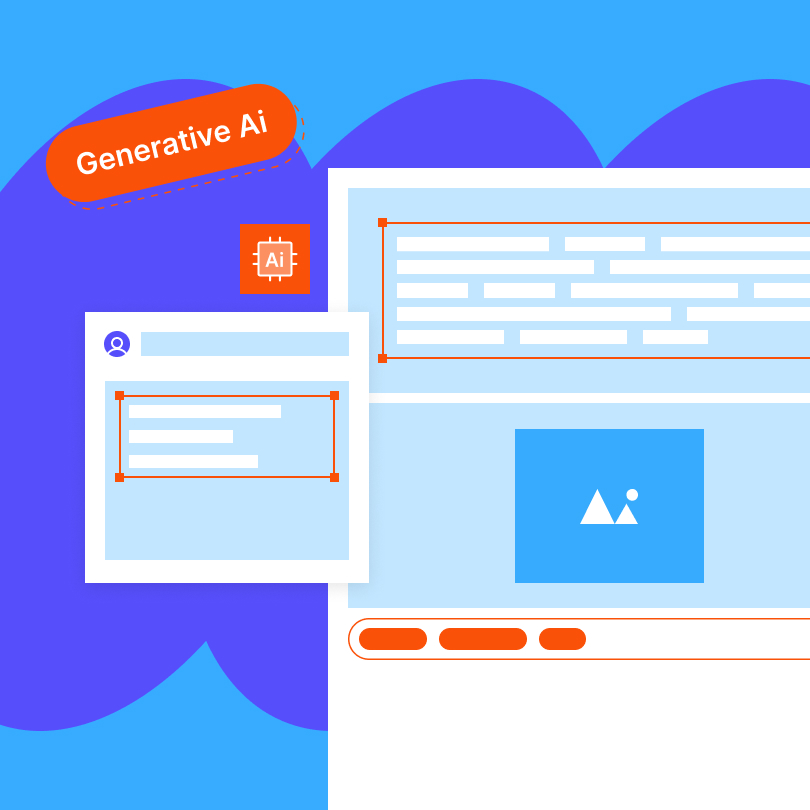Whenever potential customers encounter your social media posts, blog posts, or website, they become a part of your web design sales funnel. All those touchpoints serve as your online storefronts, sparking people's curiosity and awareness.
But you’ll have many competitors on that journey, everyone hoping to convert leads and gain loyal, lifelong customers. So, how do you ensure your company comes on top of this competitive battle?
Optimize your website sales funnel for web design and keep visitors engaged at every step. The same applies to any platform you use to attract, inform, and gain new clients and buyers.
However, that must sound easier said than done. Our tips will help you skip thinking about how to do it and move straight to accomplishing it.
What is a Web Design Sales Funnel?
A web design sales funnel is a strategically designed pathway guiding potential clients from initial awareness to conversion. It refers to the stages a visitor traverses on a website, moving from being introduced to the web design services to taking a desired action, such as making a purchase or initiating a consultation.
The Stages of Web Design Sales Funnel
Before diving into tips, let’s start by clarifying the stages of the sales funnel for web design, as each shapes user perceptions and impacts engagement.

Awareness Stage
At the top of the funnel, prospective clients learn about a company or professional and become aware of their web design services. That typically starts with referrals, organic search results, social media posts, or affiliate links that lead users to the website.
The fundamental point in this phase is to capture the target audience’s attention and initiate interest, which you can achieve with quality content, informative infographics, captivating visuals, and attractive CTAs.
Interest Stage
As users progress, they start to explore specific web design service pages, case studies, or portfolios. For instance, a visitor intrigued by a compelling blog post might navigate to a portfolio showcasing the agency’s diverse design projects.
Visual appeal and detailed project descriptions will help maintain interest and encourage further exploration.
Consideration Stage
At this point, potential clients evaluate the offerings in more detail. They’ll consider whether the products and services match their needs and objectives and if they’re worth purchasing.
That’s why you should prioritize clear calls-to-action prompt actions like requesting a quote or exploring pricing information. For example, you can add a well-placed “Get a Free Consultation” button on a service page, encouraging users to take the next step in the decision-making process.
Conversion Stage
After assessing the offer and acknowledging its benefits, users engage further. Hence, this stage could involve filling out a contact form, initiating a live chat, or purchasing the product or service directly.
The best approach is to create a persuasive and straightforward CTA, such as “Start Your Project Now,” as it guides the user towards a meaningful conversion, turning a prospect into a client.
Post-Conversion Stage
After a successful conversion, users should receive thank-you messages and details about the next steps. For instance, an automated email series may nurture new client relationships, providing additional resources, project timelines, and expectations.
That helps ensure a smooth transition and reinforces client satisfaction.
Retention and Advocacy Stage
The sales funnel shouldn’t end with a purchase or one-time collaboration. Instead, it should extend beyond conversion to focus on client retention and advocacy.
Satisfied clients may leave reviews or testimonials, contributing to the brand’s credibility. You can encourage retention by fostering ongoing communication through newsletters, exclusive offers, or loyalty programs that build a lasting relationship, turning clients into advocates who refer others to the web design services.
Sales Funnel Tips for Web Designers
The sales funnel for a web design agency can be tricky if you don’t optimize it well. Here are the strategies you can use to ensure a continuous return and engagement.
1. Create a Visually Engaging Homepage
To start your web design sales funnel on the right foot, develop an aesthetic, functional, intuitive, and captivating homepage that immediately communicates your design prowess. Use high-quality visuals, concise yet riveting copy, and strategically placed CTAs to guide visitors through the funnel.
But remember, your homepage should load in less than three seconds and feature the most significant information at the top left corner, known as the primary optical area.
2. Tailor Content to Your Target Audience
One can never emphasize enough the importance of customizing your content to address specific pain points and showcase solutions. Consider your target audience, what they want, and how you can address those needs.
But also, analyze how your products and services fare in comparison to your competitors and what’s your unique edge. The next step is to articulate how your web design services can meet your target audience’s requirements, emphasizing benefits rather than just features.
3. Optimize Landing Pages for Conversions
According to HubSpot’s 2023 data, the average landing page conversion rate across all industries is nearly six percent. However, you can increase that percentage by creating appealing and dedicated landing pages for various services or packages.
Ensure they are streamlined, free from distractions, and feature persuasive elements like client testimonials, project highlights, and prominent CTAs to maximize conversion potential. Remember that landing pages that convey positive emotions generate higher conversion rates.
4. Prioritize User Experience (UX)
An intuitive and responsive design is a vital element for a successful website. That includes smooth navigation, fast load times, and mobile optimization, reducing bounce rates and increasing the likelihood of user engagement.
5. Implement A/B Testing for Continuous Improvement
Your work doesn’t end with developing an attractive and informative website that can drive a sales funnel for web designers. Instead, regularly conduct A/B testing on various elements within the funnel, such as headlines, CTAs, and design layouts.
Analyze the results to make data-driven adjustments that enhance user interaction and conversion rates. But your A/B testing should also encompass email campaigns, social media ad campaigns, printed marketing materials, mobile apps, direct mail campaigns, sales calls, and in-store displays.
6. Leverage High-Value Lead Magnets
Offer valuable resources, such as design guides, templates, or exclusive insights, to encourage visitors to share their contact information, regardless of the platform. For instance, if you use multichannel promotion, tailor promotional strategies to each channel, considering your user’s unique characteristics and preferences.
And always provide an additional benefit that helps you get relevant data. These assets attract potential clients and position you as an authority in web design.
7. Use Riveting CTAs
Craft CTAs that resonate with your audience and use them as guidance through the web design sales funnel. Clearly communicate the steps that will follow, whether scheduling a consultation, requesting a quote, or exploring your portfolio.
Effective CTAs are just as important on social media handles as on your website. Think them through and adapt them to each platform so that they speak to your targeted customers.
8. Showcase a Diverse Portfolio
Display a comprehensive and diverse portfolio that reflects your versatility as a web designer. Highlight various industries, design styles, and project scopes to assure potential clients of your ability to meet their unique needs.
9. Integrate Testimonials Strategically
Feature client testimonials at crucial touchpoints within the funnel, such as on service pages or near CTAs. Real-world feedback builds trust and credibility, assuring visitors that others have had positive experiences with your web design services.
10. Streamline the Contact Process
Simplify the contact or inquiry process to reduce friction for potential clients. Use a straightforward form, minimal required fields, and clear instructions to improve user experience and encourage more inquiries.
11. Leverage Chatbots for Instant Interaction
Develop and use chatbots on your website for instant responses to common queries. Thanks to that, you’ll boost user engagement and capture leads outside regular business hours.
12. Highlight Social Proof on Social Media
Leverage your social media handles to showcase client testimonials, project snapshots, and behind-the-scenes glimpses. Consistent and positive social proof can reinforce your brand’s credibility and attract potential clients from diverse online channels.
13. Create Interactive Design Tools
Consider developing interactive tools or features that allow visitors to engage with your design process. Whether it’s a design quiz, color palette generator, or a virtual tour of your portfolio, interactive elements improve user involvement and can lead to increased conversions.
14. Establish Thought Leadership
Regularly create and share insightful content related to web design trends, best practices, and case studies. That can position you as an industry thought leader and resonate with a qualified audience interested in your expertise.
15. Incorporate Urgency and Scarcity
Introduce elements of urgency and scarcity in your sales funnel, such as limited-time offers or exclusive deals. As a result, you’ll encourage potential clients to take prompt action, reducing the likelihood of procrastination in their decision-making process.
16. Use Personalized Email Campaigns
Leverage personalized email campaigns based on user interactions with the funnel. Segment your email list and tailor messages to specific user behaviors, providing relevant content and offers that resonate with their interests.
17. Regularly Update and Optimize Content
Keep your website content fresh, informative, and relevant. Consistently update your portfolio, blog, and service pages to reflect your latest work and insights.
Another thing to remember is that your overall web design should be custom and in harmony with your brand’s image and target audience. These strategies will help you engage returning visitors and positively impact search engine rankings.
18. Offer Transparent Pricing Information
Be upfront and honest with your customers by providing transparent pricing information for your web design services. Clearly outline what each package includes and consider offering tiered pricing to cater to different client budgets and needs.
19. Initiate Retargeting Strategies
Use retargeting strategies to re-engage visitors who have interacted with your website but haven’t converted. Leverage targeted ads to remind them of your services and encourage a return visit to the funnel.
20. Build Relationships with Follow-Up Sequences
Develop automated follow-up sequences after initial client interactions. Whether it’s a thank-you email, additional resources, or a series of onboarding messages, thoughtful follow-ups can help establish lasting client relationships.
Wrapping it Up: Web Design Sales Funnel Examples
Whether you want to optimize your website’s web design sales funnel or another platform, the following are examples of effective strategies.
- Content Marketing Beyond Blogs: Expand content marketing efforts to include high-quality video content, podcasts, or infographics shared across various online platforms.
- Omnichannel Email Drip Campaigns: Ensure your email drip campaigns span across multiple communication channels, providing a consistent experience for leads.
- Multichannel Consultation Offers: Provide options for scheduling free consultations through social media messaging, email, or other communication channels.
- Diverse Educational Events: Consider hosting webinars, workshops, and live Q&A sessions across platforms to reach a broader audience passionate about web design trends.
- Exclusive Subscriber Offers Beyond Newsletters: Incentivize subscriptions not only for newsletters on the website but also through exclusive offers on social media or through partnerships with other platforms.
- Holistic User Surveys: Conduct user surveys through email, social media, or targeted advertising to gather comprehensive feedback on the web design experience.
- Integrated Social Media Strategies: Leverage social media platforms to share insights on the website and actively engage with the audience, participate in design discussions, and drive traffic from various sources.
Establishing and maintaining a web design sales funnel that continuously delivers takes time, well-thought-out strategies, consistent effort, and iteration. Sometimes, that undertaking requires teamwork, which might prompt you to hire professional web design services to help you get it done.
In that case, choose those with experience in creating a successful sales funnel for web design and check our guide to ensure they did a good job.





